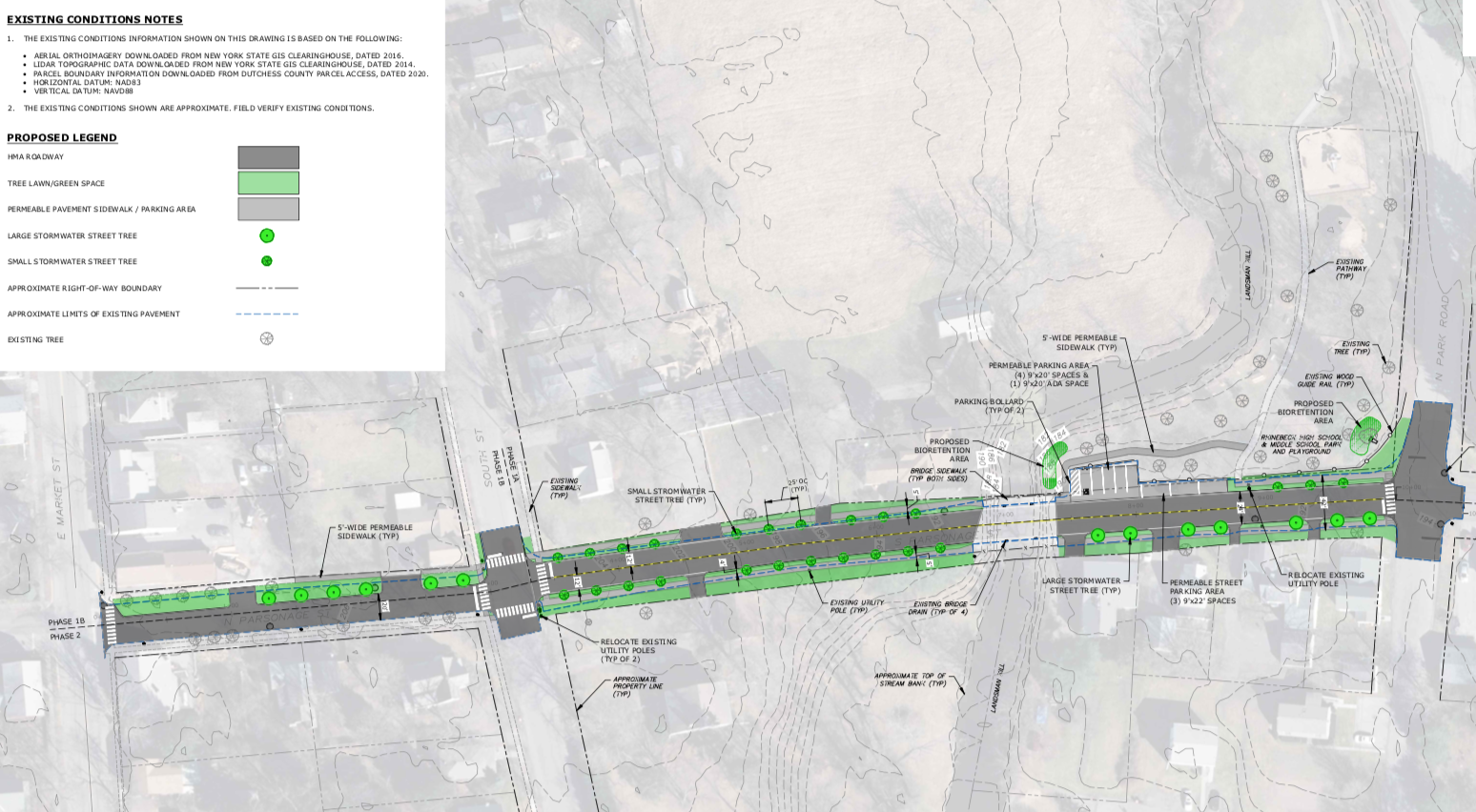
Green Infrastructure
What is Green Infrastructure?
Green Infrastructure is becoming increasingly popular as municipalities face crumbling infrastructure and communities are rethinking their approach to the built environment’s relationship to nature. The latest engineering research draws on nature-based solutions for treating stormwater run-off. In a nutshell, green infrastructure means designing spaces with less impervious paved surfaces to instead allow plants and the soil to percolate stormwater before it reaches surface water (such as the Landsman Kill and Crystal Lake) and groundwater. The percolation process manages stormwater runoff to filter out sediment and pollutants that can cause damage to the ecosystem as well as physical impacts such as erosion and sedimentation.
See this Dutchess County PDF.
How to Use Green Infrastructure on Your Property
In the Village, some properties may experience increased flooding due to more frequent and intense storms.
Remove impervious surfaces like asphalt and concrete in favor of gravel and pavers that provide gaps for draining rain.
Use french drains, catch basins, bio-swales, or rain gardens to absorb excess water.
Try rain barrels to catch excess water when it comes — because when it rains, it pours. These days if feels like we’re either in draught or deluge, and rain barrels can smooth out these extremes.
Plant trees and shrubs that are good at soaking up water in wet areas on your property.
Example Plan
As a demonstration project for this new direction, the Village Board worked with Tighe and Bond on a feasibility study and concept plan. The project, which has a phased plan, would run along S. Parsonage St and the Lions Mini Park. Such a highly trafficked stretch, with one of the Village’s few green spaces, right on the way to the schools, represents a prime opportunity to engage with the school and community about these new green infrastructure and engineering practices and how this direction improves our natural systems. Other co-benefits, such as traffic calming and safer intersections, bolster the walkability and bikeability of this area.
We applied for multiple grants for this project but did not get them.
In July 2021, we submitted for a 50/50 match Climate Smart Communities grant. In December 2021 we found out our application was not accepted.
We submitted for EFC’s GIGP 75/25 match grant in February 2021 (Environmental Facilities Corporation, Green Innovation Grant Program). In June 2021, we found out we did not get accepted.
Finally, we received a TAP Safe Routes to School Grant which includes this stretch of road. Unfortunately, green infrastructure was not included.
Concept Plan
Here you can see a draft design of the project. The price tag for this was ~$485K in 2021. You can download the preliminary budget that was submitted as part of our grant proposal.
You can download the PDF of the phased plan.
Please note, these are the preliminary concept plans submitted with the grant proposals. Sharing here as just an example of what a green infrastructure project would look like.